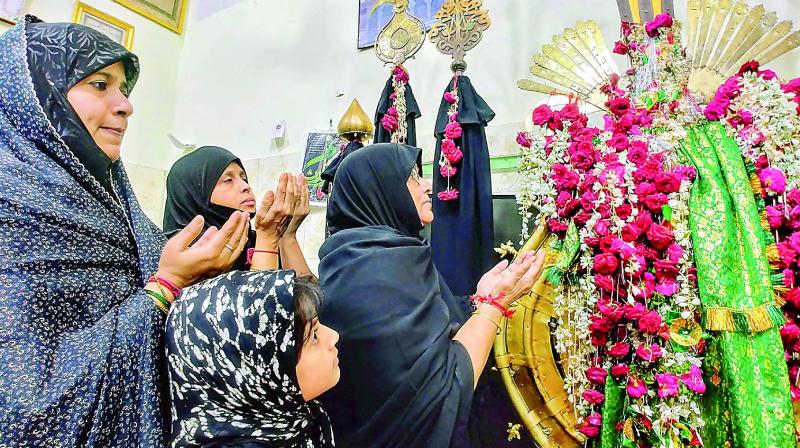Hyderabad: Only women make offerings at Alawa-e-Sartauq ashoorkhana

Hyderabad: On the day of the processions, women from the Shia community gather to catch a glimpse of the Bibi-ka-Alam and make offerings at the Alawa-e-Sartauq at Darulshifa. Meanwhile, men are barred from entering the ashoorkhana located near the Darulshifa playground.
Alawa-e-Sartauq is one of the important ashoorkhanas in the city. The tauq (shackles) after which the ashoorkhana has been named, was brought from Karbala in Iraq. On the procession day, the Bibi-ka-Alam, which is mounted on the back of a caparisoned elephant, makes its way through the crowd into the magnificent building which dates back to the Qutb Shahi era.
Hameed Hussain Jaffery, the president of the Shia Youth Conference, says, “The shackles were placed around the neck of Imam Zain-al-Abideen when he was taken prisoner during the battle of Karbala in 16 AH (680 AD). The shackles were brought to India when Abdullah Quli Qutb Shah was the King. He issued orders to incorporate it into an Alam and install it at the old Darulshifa Hospital.”
The Yadgar-e-Hussaini ashoorkhana is reserved for women. Majlis (mourning meetings) are held there every day. Several other ashoorkhanas also conduct separate majlis for women.
At the Bibi-ka-Alawa, majlis is held for women every morning during the first ten days of Muharram. Aliuddin Arif, a 11th generation mutawalli (caretaker) of the Bibi-ka-Alawa, says that the tradition of conducting a procession began in 1969, in response to the demands of women of the community who were unable to catch a glimpse of the Alam. “The Alawa-e-Sartauq was selected for them to assemble and pray as the two-storeyed building has only one entry and exit point,” he says.
Women from across the city participate in the majlis at the Bibi-ka-Alawa. “Similar gatherings are held at other ashoorkhanas as well,” Mr Arif says.

